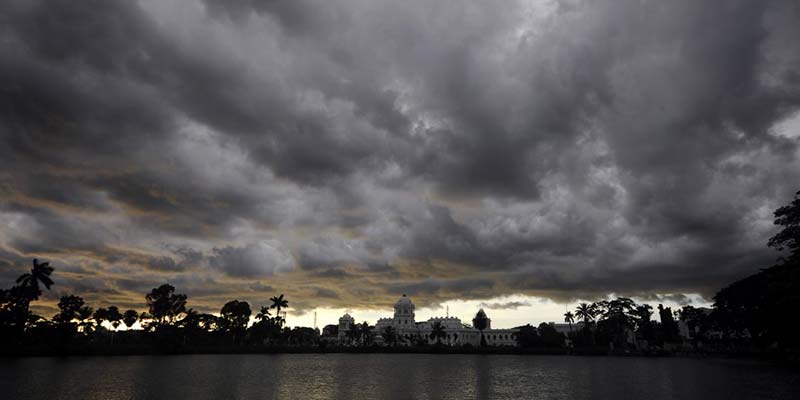- India
- Feb 10
- Mathew Gregory
National Monsoon Mission
Under the Monsoon Mission, Ministry has developed the state-of-the-art weather and climate prediction models, which are now in operational use. These models include models for short range to medium range (1-10 days), extended range (10 days to 30 days) and seasonal (up to one season). The models developed under the National Monsoon Mission (NMM) have shown very high skill in predicting important weather events on different time scales during the last 3years.
Objective of NMM
• to improve the monsoon prediction over India on all time scales
Targets of Monsoon Mission
• Development of a seamless prediction system using monsoon mission model, on different time scales, like Seasonal (for whole Monsoon season), Extended range (up-to 4 weeks), Short range prediction (up-to 5days).
• Initiate and coordinate working partnership between Indian and foreign institutes to develop a system for prediction of extremes and climate applications.
• Develop and implement system for climate applications having social impacts (such as agriculture, flood forecast, extreme events forecast, wind energy,etc.)
• Advanced data assimilation system for preparing high quality data for model predictions.
Major achievements of NMM during the last three years
• Setting up of an advanced prediction system for Seasonal prediction; Extended range prediction and Very high-resolution short-range prediction.
• Commissioning of a Global Ensemble Forecast System (GEFS) for short and medium range prediction at 12km.
• A remarkable improvement in the skill of the forecasts especially in the short to medium range has been noticed.
• The Cyclone track and intensity prediction has also shown a steady improvement over the last three years.
• The operationalization of Monsoon Mission dynamical model (MMCFS) to prepare operational seasonal forecast of monsoon rainfall and temperatures during the hot and cold weather seasons overIndia.
• Use of MMCFS and extended range prediction system for preparing regional seasonal forecast outlook for south Asia under WMO recognised Regional Climate Center and South Asia Seasonal Climate Outlook Forum (SASCOF)activities.
• Development of an algorithm to monitor and predict the Monsoon Intra-seasonal Oscillations (MISO) and Madden-Julian Oscillation (MJO) on the extended range.
• Development of an index to predict the genesis and evolution of tropical cyclones and other cyclonic disturbances over the north IndianOcean.
• Probabilistic Quantitative Precipitation Forecast over all the Indian river basin have been operationally implemented.
• Probabilistic (percentile based) forecast for extreme wind, precipitation have been established.
• GFS/GEFS forecasts have been extensively used to provide guidance to Forest fire possibility and also to Renewable Energy Sectors namely, wind and solar.
• Development of a high resolution regional re-analysis product, IMDAA at very high resolution of 12km.
• Several scientists have been trained for modelling & forecasts through Monsoon Mission Program and capacity building activities have been done through targeted trainings.
Atmosphere and Climate Research – Modelling, Observing Systems and Services (ACROSS)
• It is one of the umbrella scheme under MoES addressed in respect of weather and climate.
• The entire gamut of weather/climate prediction involves assimilation of meteorological observations, understanding the processes, research and development of dynamical models and providing the forecast services.
• Each of these aspects is incorporated as sub-scheme under the umbrella scheme “ACROSS” and is being implemented through India Meteorological Department (IMD), Indian Institute of Tropical Meteorology (IITM), Pune and National Centre for Medium Range Weather Forecasting(NCMRWF).
• Overarching objective of the Scheme is as follows:
◦ To conduct R & D for improving forecast of weather, climate and other hazardous events in real-time for delivery of a reliable weather and climate service.
◦ Augmentation of observations and their assimilation into weather and climate models
◦ Understanding the physical processes through field campaigns
◦ Developing and running of high resolution models for giving forecast in all scales.
◦ Translating science to service and it delivery to society.
◦ Improving and acquiring the required infrastructure
• Sub-schemes under ACROSS
a. Commissioning of Polarimetric Doppler Weather Radars(DWRs)-IMD
b. Upgradation of ForecastSystem-IMD
c. Weather & Climate Services-IMD
d. Atmospheric Observations Network-IMD
e. Numerical Modeling of Weather and Climate–NCMRWF
f. Monsoon Mission II including High Resolution (12km) global ensemble forecast system (NITI Aayog identified activity) –IITM
g. Monsoon Convection, Clouds and Climate Change (MC4)-IITM
h. Centre for Climate Change Research (CCCR) including Virtual Water Center, Physics & Dynamics of Tropical Clouds(PDTC), Atmospheric Research Testbeds (ART) for process studies and National Climate Reference Network(NCRN)
i. Metro Air Quality and Weather Service(MAQWS)
j. High Performance Computing System(HPCS)-IITM
k. National Facility for Airborne Research(NFAR)-IITM.
(The author is a trainer for Civil Services aspirants. The views expressed here are personal.)

